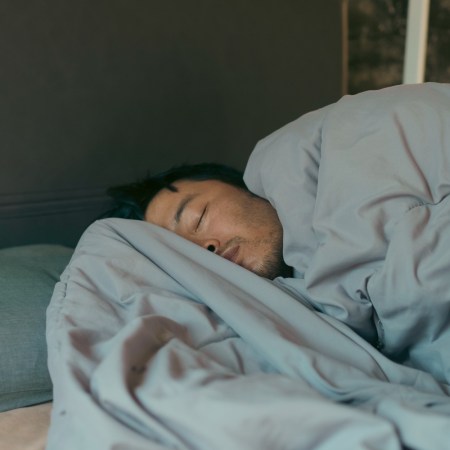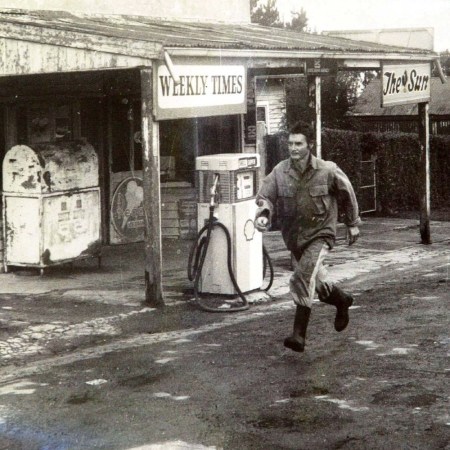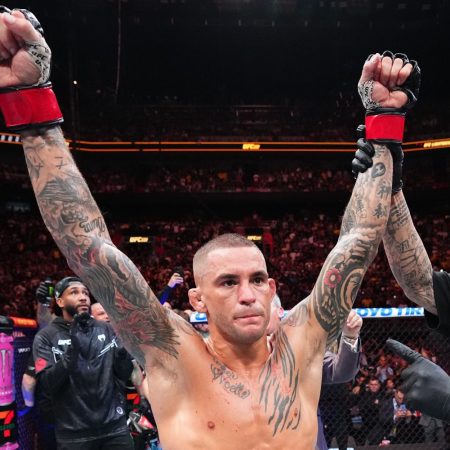We all want to be as fit as our favorite professional athletes.
But no matter how many articles claim to tell you “how to train like LeBron,” there’s one glaring problem:
You’re a professional in something else. Training like the pros isn’t realistic.
Instead, we asked coaches and trainers behind NHL teams, undefeated UFC fighters and PGA champions: what’s the single most important thing regular people can incorporate into their fitness routines?
Consider this your elite-athlete cheat sheet.
Tommy Powers
Strength and Conditioning Coach for the Florida Panthers and President of Empowers Performance
Who he’s trained: Aleksander Barkov, Aaron Ekblad, Vincent Trocheck, Jonathan Huberdeau
Tip: Always start with a dynamic warmup.
“Priming the body is key to decreasing the risk for injury and increasing readiness. With the athletes I work with we generally start with a progressive aerobic-based warmup, which may last 5 to 10 minutes. Next we do soft-tissue work to lengthen the muscles. This can be done by a trainer or alone with a foam roller. Then we continue with targeted active static stretches and core/glute activation. Lastly, we finish with dynamic movement stretches, where I include more global synchronistic movement patterns.
“I know this may sound like a lot and that it can take forever. The average person in my experience will just start hitting the weights, the treadmill, or jump right into a tennis match with a friend without doing any sort of warming up. If the average person added in some forward and lateral legs swings, stretched his or her hip flexors, quads, and hamstrings, and did some posterior chain activation such as a set of posterior (glute) bridges, I guarantee they would feel much better during their workout, run, match/game than someone that just jumps into it without incorporating any sort of dynamic warmup to open and activate the body.”
Tip: Get at least 7.5 hours of sleep.
“This may seem like an obvious one, but sleep is critical to the elite athlete and the average person, but the average person may not realize it. Some say they only need six hours and are fully functional, but when it comes to performance and decreasing the risk for injury, there’s a direct correlation to athletes who are sleep deprived with an increased risk for injury during training, practices and competitions. I track our players’ sleep daily and recommend that they have a sleep opportunity of at least nine hours. Ideally, I would suggest that they get a full 9 to 11 hours, and also have a good nap routine, but realistically with our schedule, travel, etc. this is not the case all the time. This is one of the reasons teams on a home-stand generally have more success. Equally important is the sleep after games, which is essential for recovery. For the average person, I would recommend getting seven to nine hours with a least a 7.5-hour sleep opportunity. With our game and travel schedule being what it is, some of our players need help falling asleep. For this I provide a supplement I formulated with the help of a naturopathic doctor called PowerDown.”
Keith Trimble
Boxing coach, and striking coach to UFC, Professional Fighters League and Bellator fighters
Who he’s trained: Adam Kownacki (undefeated heavyweight currently ranked #4 IBF, #8 WBC), Gregor Gillespie (13-0 lightweight in the UFC) [pictured above right], Chris Algieri (former WBO Light Welterweight Champion)
Tip: Get a jump rope. Bring it with you everywhere.
“Jumping rope involves your full body and gets that heart rate up. Your shoulders, arms, abs, legs and calves are being used at all times while jumping. Start off with 10 minutes. Go for two minutes, rest a minute and build up if you’re a first-timer. Try to build up to 30 minutes or more of jumping. Jumping rope for 10, 20, 30 minutes or more with no rest is a tough workout. Also, it depends on how hard you push yourself while jumping. You can make jumping rope high intensity or low intensity. You can jump rope anywhere, anytime. It builds endurance, helps with coordination and is great for burning fat. There are different ropes to use — speed ropes or heavy ropes. Jumping rope gives you many options to do for a workout.”
Tip: Food is 80% of the battle.
“You always need to have a healthy diet. No matter what, food is most important — 80% is eating properly. But I don’t believe in ‘diets.’ ‘Diets’ are temporary. It has to become a lifestyle.”
Adam Bornstein
Chief nutrition officer, head of content and health advisor at Ladder, a supplement brand founded by LeBron James, Arnold Schwarzenegger, Lindsey Vonn and Cindy Crawford. He is also a New York Times bestselling author and award-winning health editor.
Who he’s trained: Long-time fitness advisor to Arnold Schwarzenegger
Tip: Do more single-leg exercises.
“I’ve been watching athletes train for nearly 20 years, and there’s one aspect of training the best in the world that is timeless — and would benefit most weekend warriors. The ‘secret’: Doing more single-leg exercises like lunges, step-ups, ‘kickstand’ squats and deadlifts.
“While most gym-goers are obsessed with the big lifts like squats and deadlifts, whether we’re talking basketball, football, tennis, skiing, surfing or tennis, athletes prefer single-leg exercises because it’s more specific to almost every athletic movement. What’s more, single-leg exercises have many advantages over the more popular variation of squats and deadlifts performed with both legs.
“When you perform a single-leg variation, you’re less likely to get hurt because you don’t create imbalances that can lead to injury. You’re also able to use less weight and still build strength and muscle. Single-leg exercises also enable you to improve your mobility through a full range of motion. And the movements can be adjusted in ways that make them easier to master. The lunge, for instance, rarely is done incorrectly in a way that hurts your knees or back, compared to the traditional squat. Even better, by going to the single-leg approach, you do twice the amount of work (think 10 reps on one leg, then 10 reps on the other), which tends to help on fat-loss plans. Safer, more effective, and designed to make you more athletic. It’s the easiest athletic upgrade to any training plan.”
Joey D Diovisalvi
Golf fitness expert and biomechanics coach at Joey D Golf
Who he’s trained: Brooks Koepka, Dustin Johnson, Vijay Singh, Rickie Fowler
Tip: Work on your stability and mobility (with this exercise).
“A fundamental philosophy for athletic golfers is to maintain stability while adding flexibility and strength — functional training for the opposing forces inherent in the golf swing.
“Grab a resistance band or a length of resistance tubing with both hands. Extend your arms in front of you with your hands a little wider than shoulder-width apart. There should be a little bit of tension in the band, and I want you to feel this tension in the muscles of your upper back. Assume your address position and then step back with your left foot. Try to maintain strong golf posture with your upper body. Slowly rotate as if into your backswing. Go as comfortably as you can while maintaining good spine angle. When the movement gets restricted, hold that position for a beat and feel the tension across your upper back. Slowly return to the starting position, hold your address position for a beat, then rotate in the opposite direction into your follow-through. Again, when the movement becomes restricted, hold for a beat and then return to the starting position. Do six complete repetitions. Then, step back with your right foot and repeat six complete repetitions.”
Alonzo Wilson
Founder and Director of Training at Tone House
Who he’s trained: Everyone from NBA players to Victoria’s Secret Angels
Tip: Pick up the intensity.
“The number one thing people need to take from the routines of professional athletes is intensity. The average person is way too comfortable when they workout. They look for the trendy workout to take a sweaty selfie rather than something that gets them out of their comfort zone. The great thing about adding intensity to your routine is that you can do it with any exercise. By adding more weight, reps or speed, you will push yourself to the next level, which is what great athletes do every day. It is very hard to slack off in a Tone House class due to the fact that you can’t hide. You can’t go to the bike in the corner or the machine in the back. When you sprint we see you and your teammates see you. We call ourselves coaches for a reason. If we see someone slacking or getting tired, we will talk to the athlete and ask if something is wrong. If nothing is wrong, we will tell them we need more from them.”
Answers may be edited for length and clarity
Main photo by Ryan Tang on Unsplash
Whether you’re looking to get into shape, or just get out of a funk, The Charge has got you covered. Sign up for our new wellness newsletter today.






















